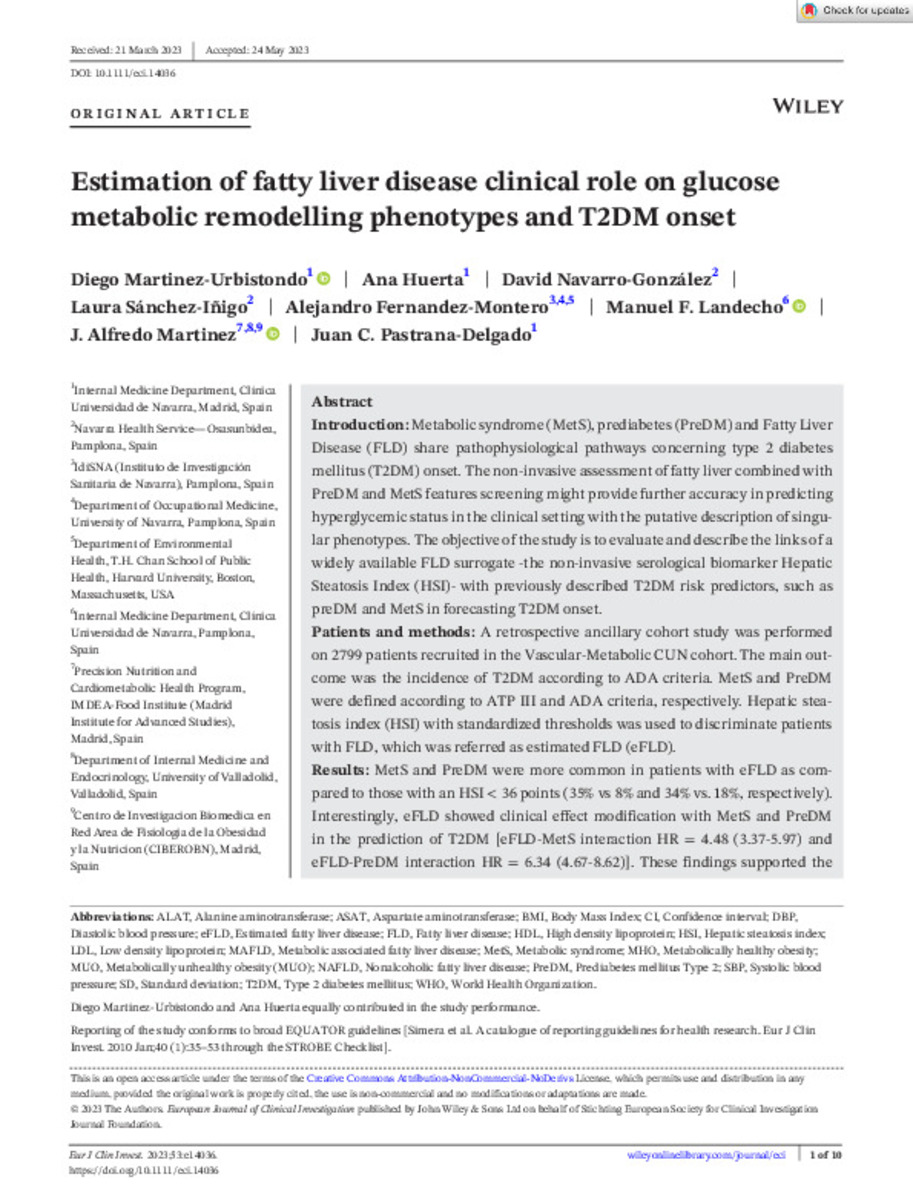Estimation of fatty liver disease clinical role on glucose metabolic remodelling phenotypes and T2DM onset
Keywords:
Materias Investigacion::Ciencias de la Salud::Especialidades médicas
Clinical assessment
Fatty liver disease
Metabolic syndrome
Prediabetes
Risk factors
Note:
This is an open access article under the terms of the Creative Commons Attribution-NonCommercial-NoDerivs License, which permits use and distribution in any
medium, provided the original work is properly cited, the use is non-commercial and no modifications or adaptations are made.
Citation:
Martinez-Urbistondo, D. (Diego); Huerta, A. (Ana); Navarro-Gonzalez, D. (David); et al. "Estimation of fatty liver disease clinical role on glucose metabolic remodelling phenotypes and T2DM onset". European Journal of Clinical Investigation. 53, 2023, e14036
Statistics and impact
0 citas en

Items in Dadun are protected by copyright, with all rights reserved, unless otherwise indicated.







